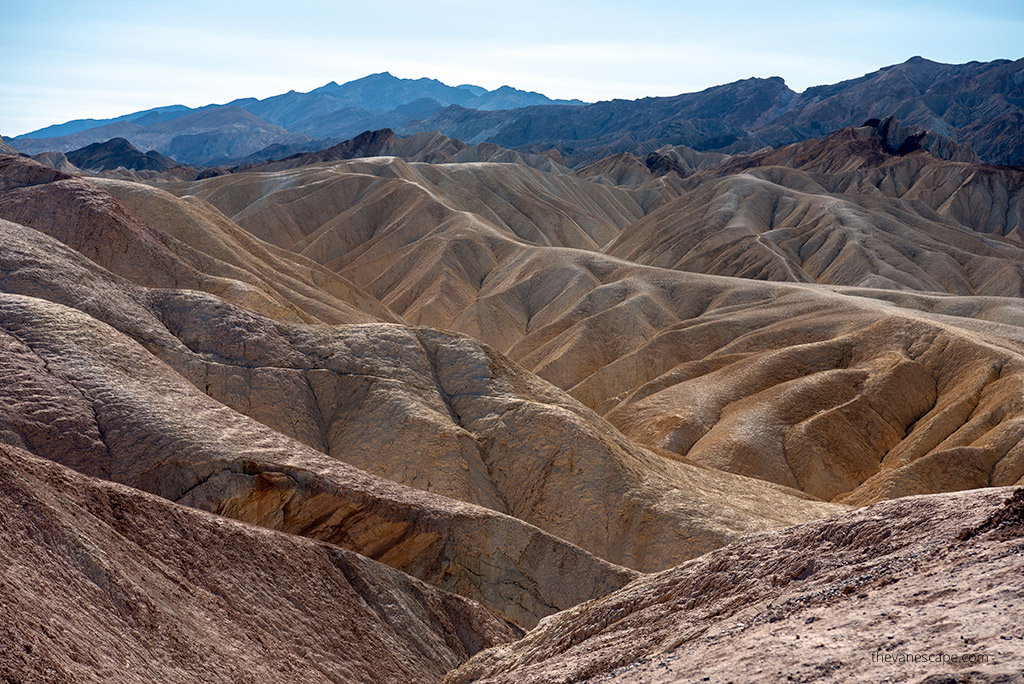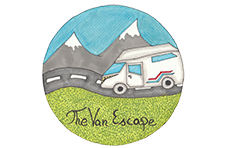12 Best Things To Do in Death Valley National Park
What are the 12 best things to do in Death Valley, the hottest and driest place in the United States? How to plan a trip to this park? What to pack, where to stay, and what is the best time to visit? What are the top attractions of Death Valley National Park? Check our list of the best activities in Death Valley with lots of tips and photos.
This article may contain affiliate / compensated links. For full information, please see our disclaimer here.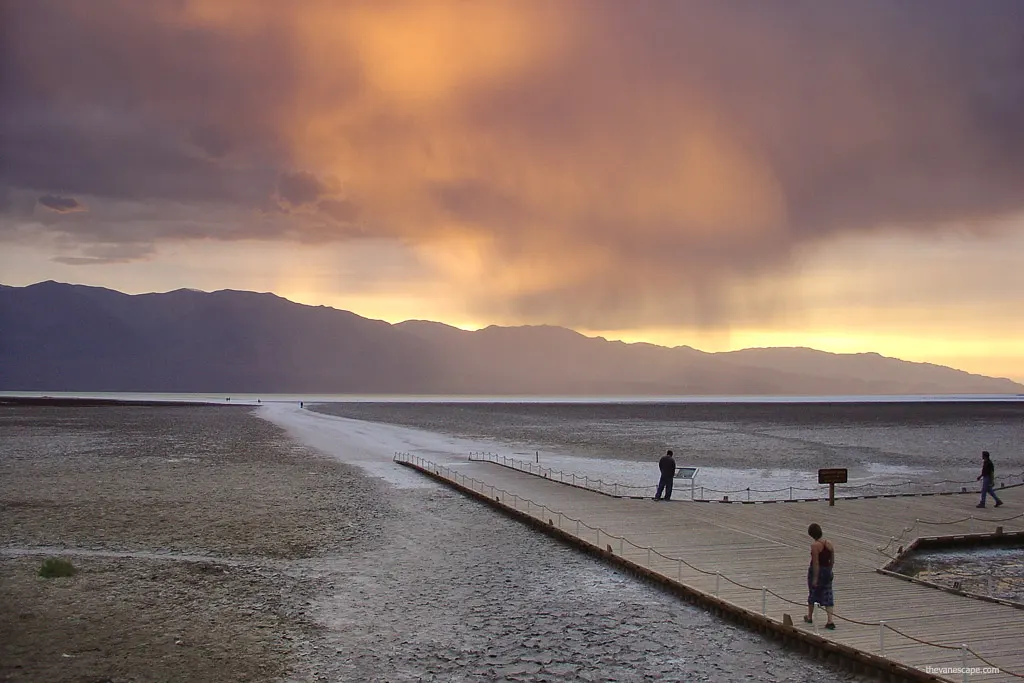
Before you go, check out the official parks website to see the current status of park roads and road construction.
The 12 Best Things to Do in Death Valley – Introduction
Death Valley National Park is extraordinary, full of mystery, rugged, and fabulous all at once. It is more than sand. It is full of barren salt flats, mountains, sailing stones, shifting sand dunes, rainbow-colored mountains, canyons, and cliffs, making Death Valley a very photogenic and beautiful place. In our opinion is a must-visit place while traveling to California.
There are many things to do in Death Valley. However, a visit to this park requires preparation due to the extreme weather conditions. We have been to this place several times and shared our experiences. This article will help you step by step in planning and preparing for a trip to this fantastic place.
We will show you 12 of the best Death Valley attractions, based on our own experience. We tell you how to plan a visit to see the park’s highlights if you have only one day in the park. And we will also tell you what to do if you have more time. Chris and I have visited this park several times. All pictures we took during our trips.
Where is Death Valley National Park?
Park straddles the California–Nevada border, in California’s Inyo County and partly in Nevada’s Nye County. Approximately 115 miles from Las Vegas and 215 miles from Los Angeles.
Is it worth visiting Death Valley National Park?
Yes! It looks like deserted, vast, scorching terrain, like an alien planet. When you see beneath your feet the broken crust of the earth, all white with saltiness, you have the impression that you are an uninvited guest here. You look around and consider the quickest way to escape if an alien should appear right next to you. In our opinion, it is worth visiting Death Valley National Park.
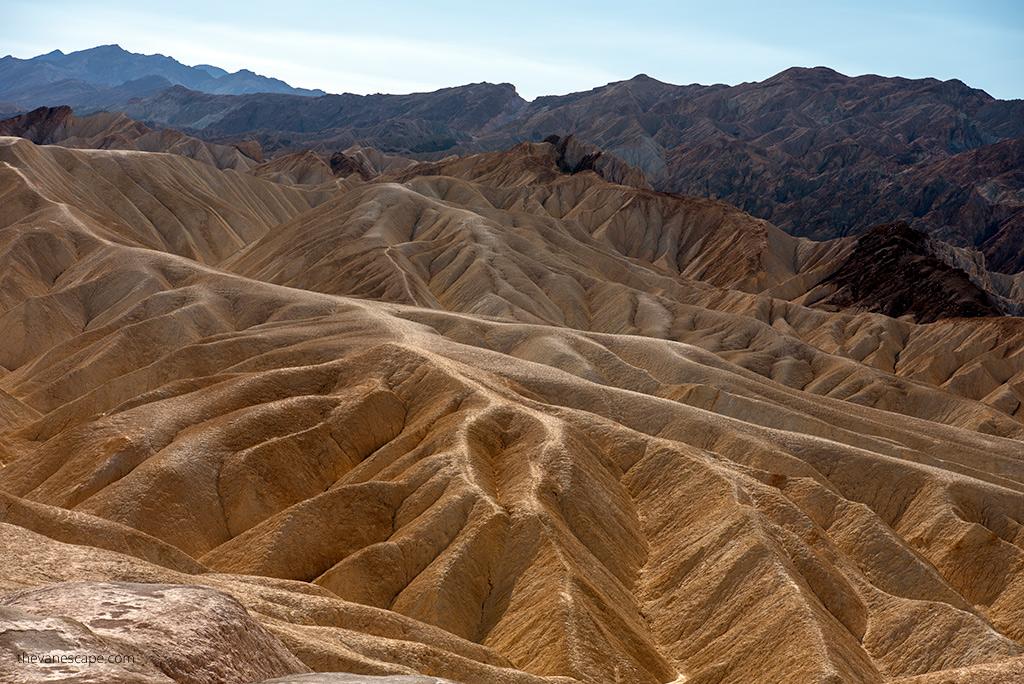
Interesting Facts about Death Valley National Park
- The area has been a Natural Monument since 1933, and on October 31, 1994, it was ranked as a National Park.
- Death Valley is the hottest, driest, and lowest of all the national parks in the United States. So, check our tips to prepare for this adventure.
- It is also the largest US national park outside of Alaska, which is why there are so many things to do in Death Valley.
- Park covers an area of 3,373,063 acres (13,650 km2), including a stony desert with the lowest point in the Western Hemisphere. More than 93% of the park is a designated wilderness area. In most of the park areas, there is no cellular service.
- A characteristic feature is extremely high air temperature, up to 122°F (50°C). Is frequently the hottest spot in the United States, with the highest temperature of 134°F (56.7°C).
- In summer, the sand heats up to as much as 201°F (94°C).
- The valley contains Badwater Basin, the second-lowest point in the Western Hemisphere at 282 feet (86 m) below sea level.
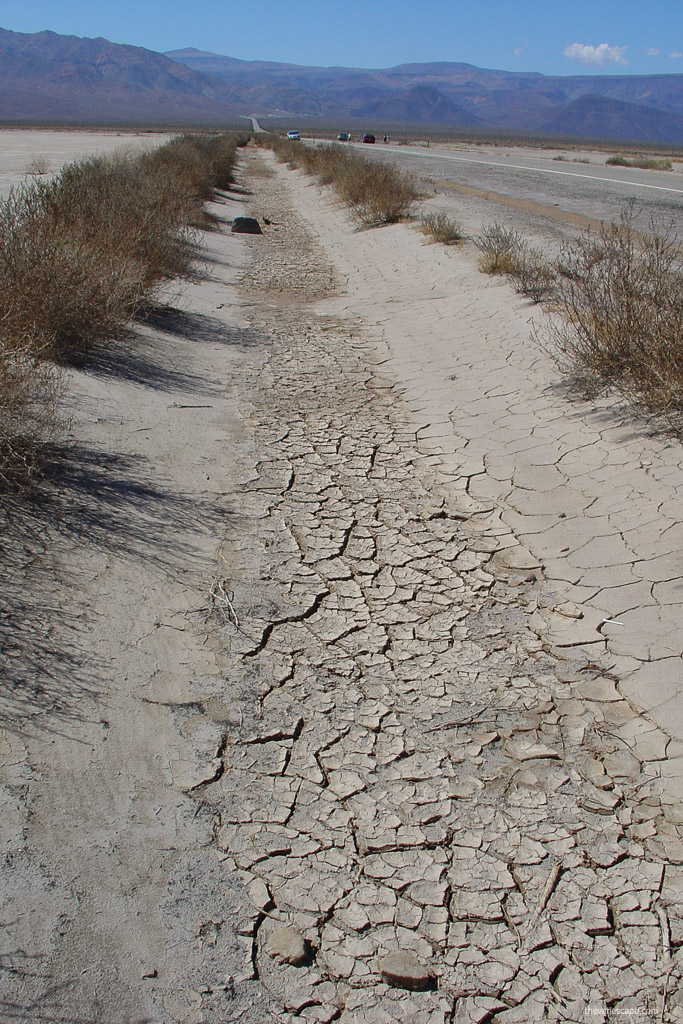
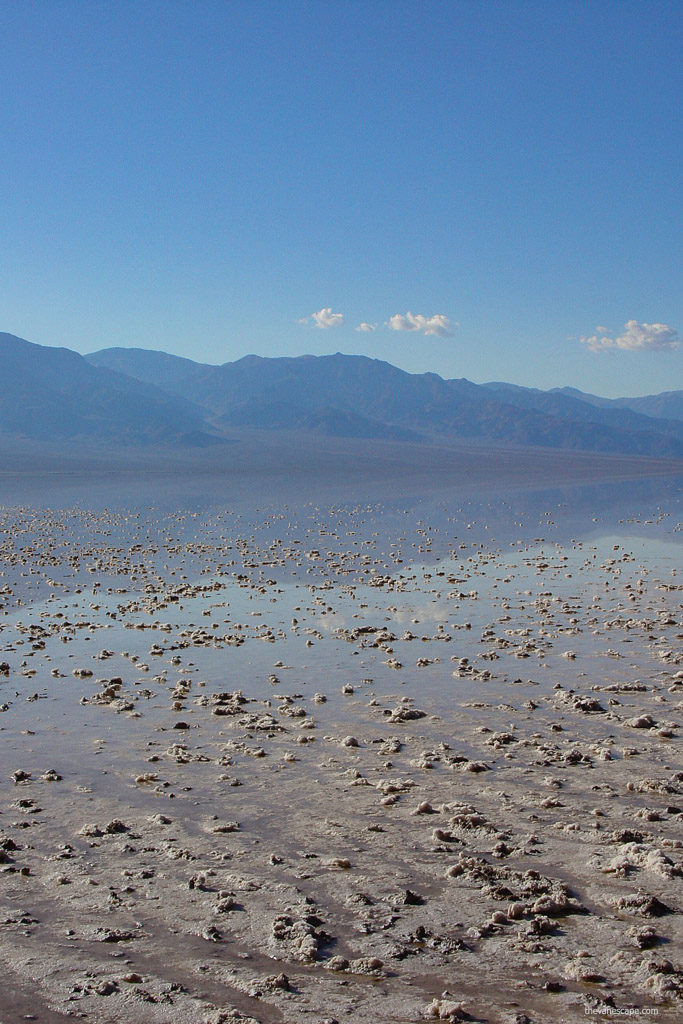
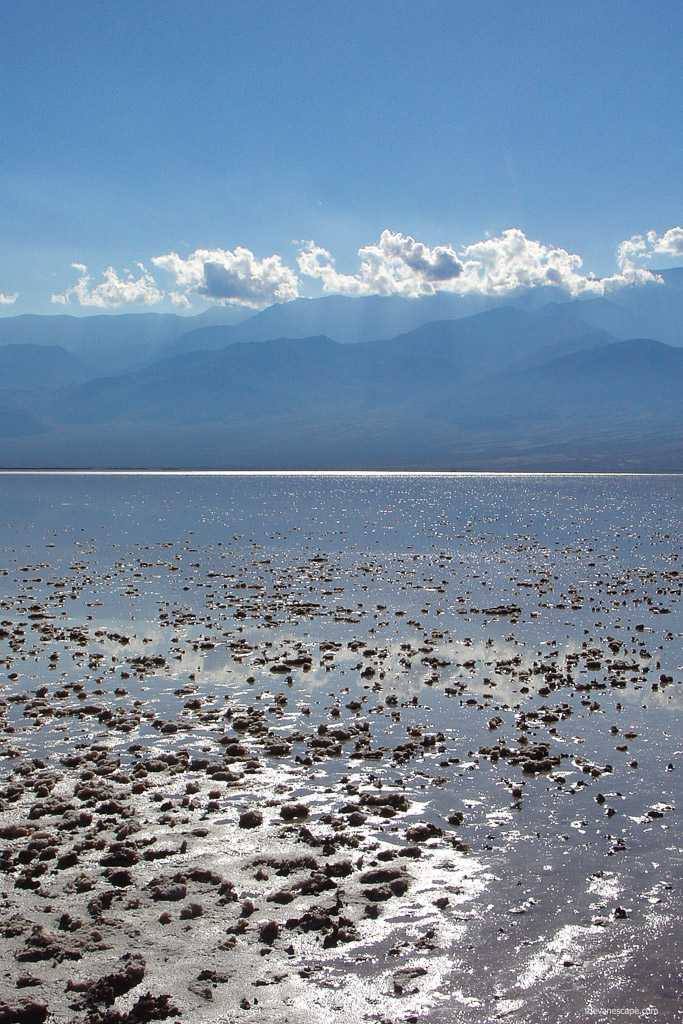
- Less than 2 inches (5 cm) of rain falls in the park annually. Four mountain ranges separate Death Valley from the Pacific Ocean, and these mountains block the rain from falling in Death Valley.
- The name of the valley was given by the settlers who, in 1849, caught up in the gold rush, were heading for the gold-bearing areas and miraculously managed to survive despite the depletion of water supplies.
- The water in Death Valley is very salty and not drinkable.
- UNESCO included Death Valley as the principal feature of its Mojave and Colorado Deserts Biosphere Reserve in 1984.
How to get to Death Valley National Park?
Although the park is mainly in California, Las Vegas, Nevada, is the quickest and easiest way to get there. Las Vegas International Airport offers excellent domestic and international connections at very reasonable prices. Las Vegas is the perfect starting point for a road trip to the Southwest.
You can reach the main attractions of Death Valley by regular car. But if you want to go on some backcountry drive, less popular places of Death Valley 4WD might be a must.
TRIP TIP: Check alerts and road conditions at the official park’s website before you go.

Death Valley National Park from Las Vegas
As the Death Valley National Park is only 115 miles from Las Vegas, you can go there on a day trip by yourself or choose one of the organized guided trips. Below we share tips on how to visit this park on your own.
From Las Vegas, you can take NV-160 W or US-95 N. Both routes take you about 2 hours of driving. The fastest way from Las Vegas is through Pahrump, Nevada. From Interstate 15, take NV 160 to Pahrump. Turn left onto Bell Vista Road just north of town. Continue on Bell Vista (Stateline Road in California) to Death Valley Junction and turn right on CA 127, then a short left on CA 190 to Death Valley.
TRIP PLANNING: If you plan to stay a few days in Vegas, check out our other posts:
3 Days Las Vegas Itinerary,
the Best Day Trips from Vegas,
the Best Las Vegas Photo Shoot Locations,
Arizona Road Trip Itinerary from Vegas,
and Utah Mighty 5 Road Trip Itinerary from Vegas.
Death Valley National Park from Los Angeles
Los Angeles is approximately 4 hours 30 min (260 miles) via CA-14 N. You can add exciting stops if you have more time for your road trip. Along State Highway 14 near Agua Dulce, you will find the 150-foot-tall tilted sandstone formations at Vasquez Rocks Natural Area Park.
The perfect stop is Red Rock Canyon State Park which protects some of Southern California’s most spectacular geology. A fantastic and surreal rock formation is Trona Pinnacles. It is a cluster of 500 oddly shaped spires and towers east of Ridgecrest.
Death Valley National Park from San Francisco
The fastest route from San Francisco is via I-5 S. It’s 458 miles and approximately 7 hours and 30 minutes of driving. The most scenic route is via CA-120 E and US-395 S. It’s 408 miles and over 8 hours of driving.
If you have more time for your road trip, you can add some stops on the way. The best stops between San Francisco and Death Valley National Park are Yosemite National Park, Inyo National Forest, Mammoth Lakes, Kings Canyon National Park, and Sequoia National Park.
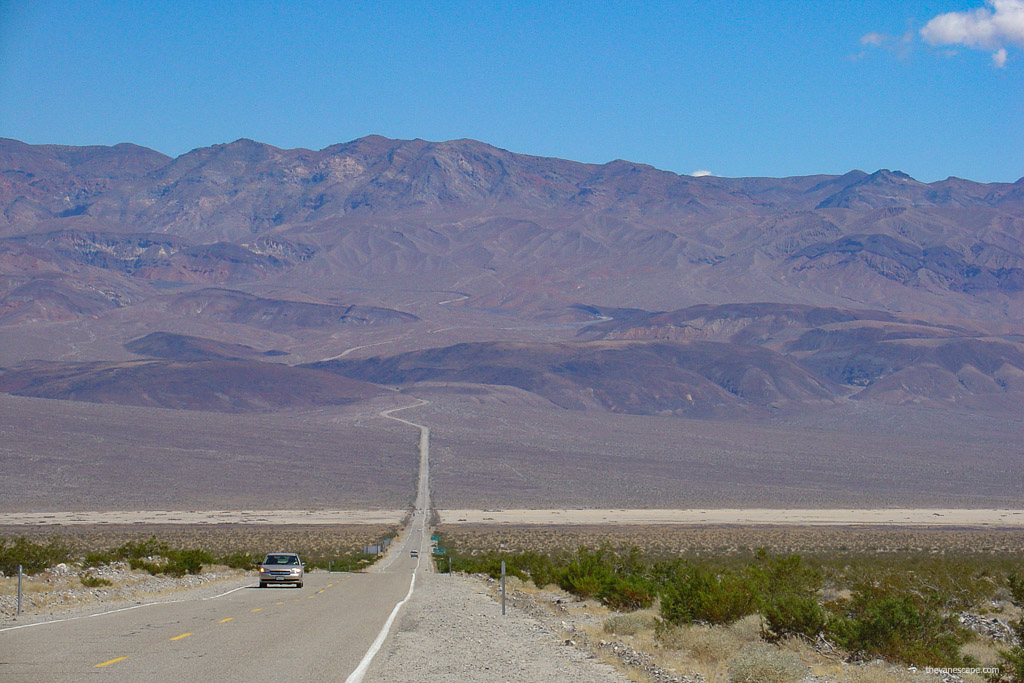
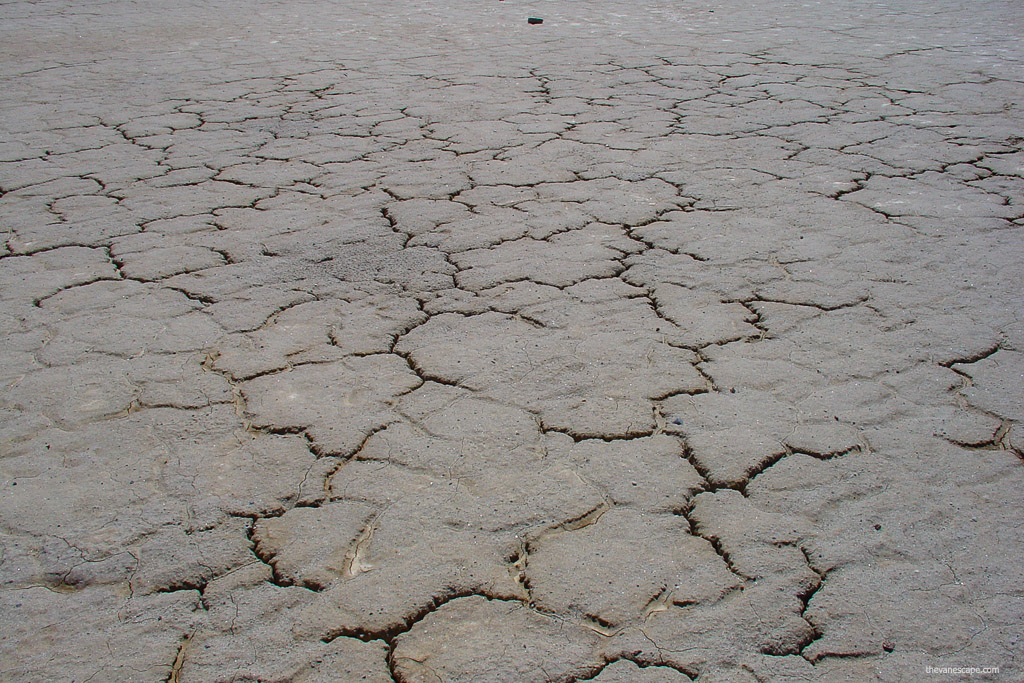
What is the Best Time to Visit Death Valley National Park?
Fees and Opening Hours
Death Valley Entrance Fee per private vehicle is $30.00, valid for seven days from the date of purchase. The best option is to buy an annual America the Beautiful Pass, which is your ticket to all U.S. national parks, lots of state parks, and recreational areas. What’s more, it is valid for a year from the month of purchase. It is your ticket to more than 2,000 federal recreation sites across the country and costs only $80. Staying in park campgrounds has additional costs.
Death Valley National Park is open all year, 24 hours a day. Furnace Creek Visitor Center, the central hub for Death Valley, is open daily from 8 am to 5 pm. So, theoretically, you can visit the park any time of the year.
However, in summer, it is sweltering. If the only time available for your visit is in the summer, check the weather alerts and our tips below to get the best preparation for your trip. The best time to visit Death Valley during summer is just after sunrise and sunset.
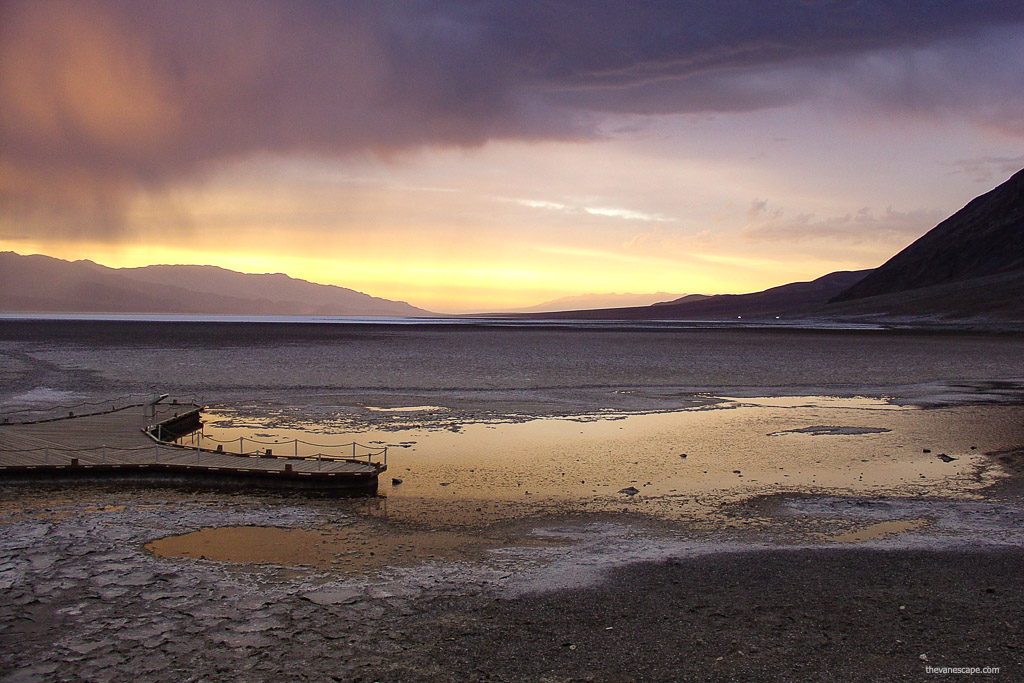
Death Valley National Park Weather
A characteristic feature of Death Valley National Park is extreme weather conditions. The name of the park did not come out of nowhere. The heat can kill. It happens that a tourist dies here because of a heatstroke. However, the name Death Valley was given by a group of pioneers lost here in the winter of 1849-1850. Even though only one of the group died here, they all assumed that this valley would be their grave.
Make sure to visit the official website before your visit park.
Spring, Fall, and Winter in Death Valley National Park
The best time to visit Death Valley are Spring and Fall. Winter is also a good time for the visit. However, it might be windy. In winter, the weather is mild. Between December and March, low temperatures usually range from 39 to 54°F, while high temperatures range from 68 to 77°F.
In February, temperatures can reach 91-93°F. However, temperatures can also drop below freezing at night. Fall and spring are the most popular times to visit Death Valley. In April, lows are around 63°F, and highs exceed 91°F, with highs exceeding 104°F. In November, lows range from 61° (minimum) to 93°F (maximum).
Summer in Death Valley
Summer is sweltering. Temperatures of 120°F or more are typical. In summer, the daily maximum temperature is 113°F or above and often reaches 122°F or more. The record was set on July 13, 1913: at 134° F, but it was nearly broken in August 2020 when the temperature rose to 131°F. Nighttime lows in July and August range from 60 to 65°F.
So, if you must go during the summer, start visiting just after sunrise, take an extended break around noon, and enjoy Death Valley before sunset. Skip hikes during summer. There are a lot of things to do in Death Valley without hiking. We show you the best overlooks to admire views without challenging hikes. Above all, pack plenty of water and electrolytes, and remember to stay hydrated.
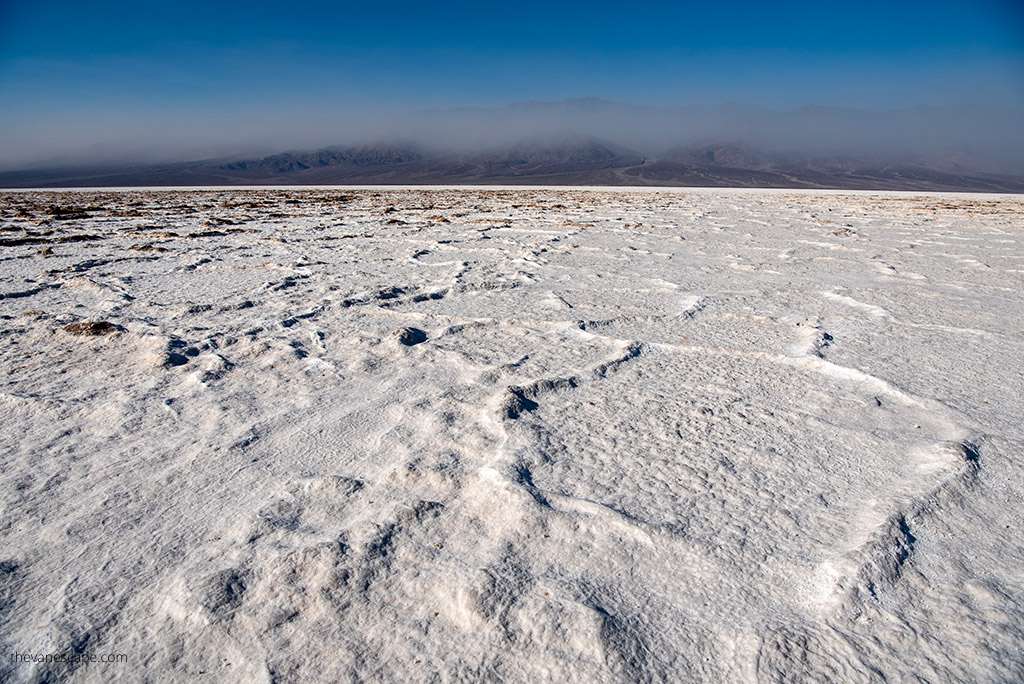
How Much Time do You Need in Death Valley?
One day in the park is a minimum to see the best of its attraction. So plan at least one day for your visit. If you can stay longer 2 or 3 days, it will be perfect.
Tips Before You Go to Death Valley National Park
- Pack more water and electrolytes drinks than you need. At least a gallon per person. It’s worth taking a supply of water just in case. Hydrate yourself frequently.
- If you plan more than one day in this park, especially hiking, you will need a good map and GPS. There is no telephone coverage in the park. A map is essential for hiking in Death Valley. You will find the park’s most fantastic hiking adventures with detailed maps and trails description in the book Hiking Death Valley National Park.
- Fill up your tank with gas before arriving at the Park. You can also tank at Furnace Creek and Stovepipe Wells in the park.
- Be sure to protect your skin from the sun. A hiking sun hat or cap, sunscreen with a high filter, and sunglasses are necessary.
- Cover the shoulders and legs with light long, and airy sleeves. Protect all your skin.
- The sand is scorching, so protect your feet from burns as well. Wear airy shoes with good soles, not flip-flops.
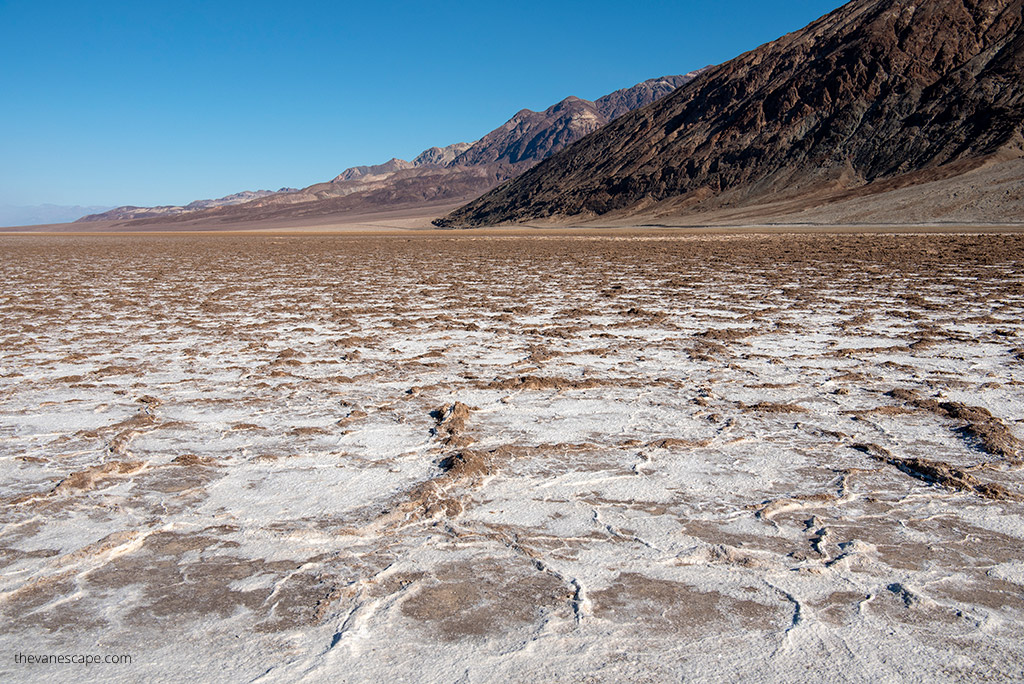
12 Best Things To Do in Death Valley National Park
Take a Walk at Badwater Basin
Walking on the cracked lake bed at Badwater Basin is one of the best things to do in Death Valley. The Badwater Basin is a dry lake 282 feet (86 m) below sea level, making it the worst depression in the North American continent. The bottom of this desiccated lake is covered with regular hexagonal salt patches. These patches were formed as the valley began to dry out, and salt crystals began to expand.
Badwater was created due to the 3,000-year-old drying up of the lake on the site. A weather station in the Badwater Basin recorded the highest temperature in the United States and at the same time on Earth, 134°F (56.7°C). A vast, flat trail from the parking lot heads out into the salt flats. Badwater Basin is also a very excellent photography spot.
Take a Look at Death Valley from Dante’s View
Dante’s View is undoubtedly one of the best viewpoints and photo stops in Death Valley National Park. From this vantage point, you can admire the entire Badwater Basin with the surrounding mountains. Dante’s View is one of the top viewpoints in Death Valley National Park.
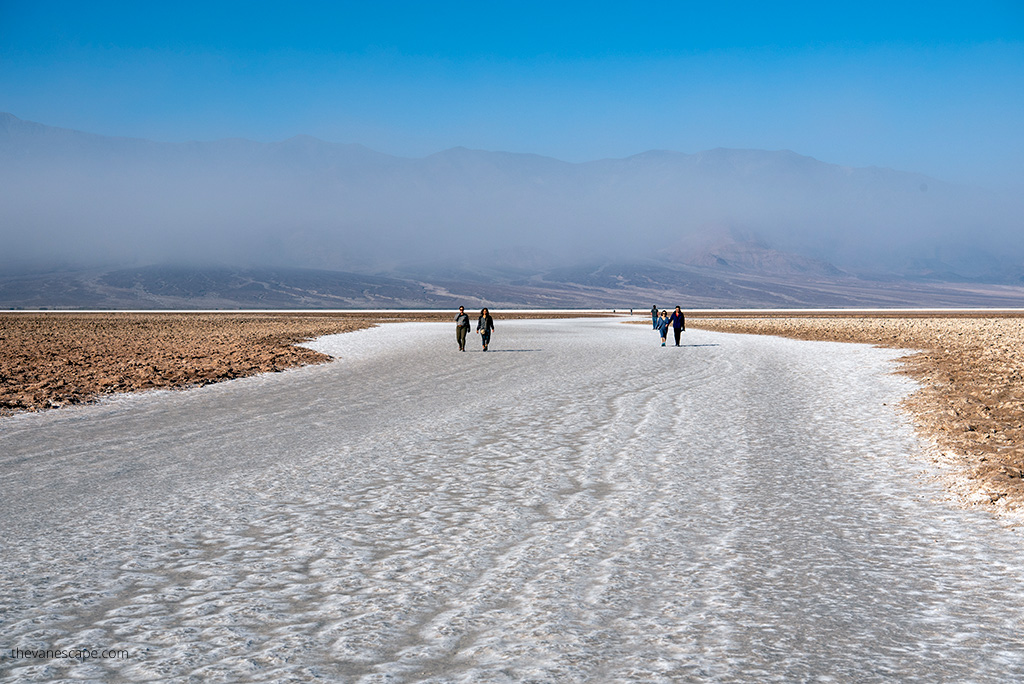
Make a Picture of Zabriskie Point
One of the best things to do in Death Valley is to take a picture of Zabriskie Point. This place makes you speechless. Zabriskie Point is one of the best vantage points and photo spots in Death Valley. You can admire and photograph interesting erosive rock formations (badlands). The philosopher Michel Foucault described the trip to this place in 1975 as the best experience of his life.
The name Zabriskie Point was given in honor of Christian Brevoort Zabriskie – president of Pacific Coast Borax – in the early 20th century. The place was also featured in the film by Michelangelo Antonioni Zabriskie Point. It’s a short and easy walk from the parking lot to the overlook. You can also hike the short trails that lead out into the hills. If you can, admire the sunset from Zabriskie Point.
Make a Scenic Artist Drive with Artist’s Palette Stop
One of the best things to do in Death Valley is driving a 9-mile scenic road called Artists Drive. This one-way road runs from south to north and offers unique landscapes. The best photo stop on Artists Drive is Artist’s Palette. This group of rocks in the middle of Death Valley features unusual colors.
The oxidation of various chemical compounds in the rocks forms them. The oxidation of iron compounds causes the red, purple, and yellow colors. The decomposition of mica causes the green color.
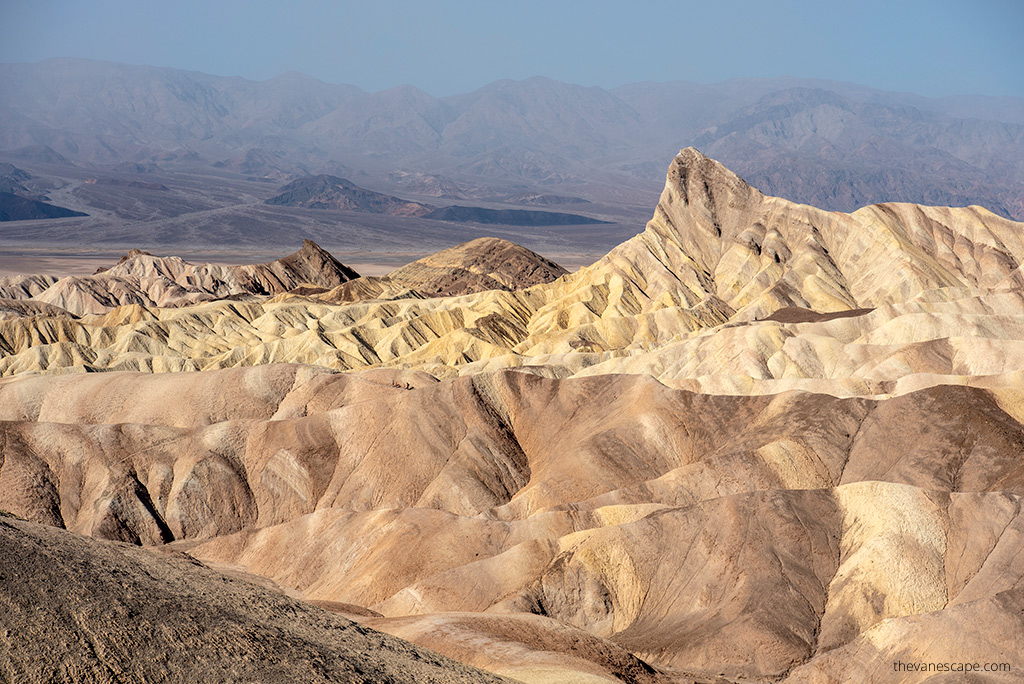
Visit Devil’s Golf Course
Devil’s Golf Course is a massive section of the valley floor in the Mojave Desert, covered with lumps of a mixture of earth and salt. These cone-shaped bodies, made of halite, are rigid and have sharp edges.
The name comes from a National Park Service guide to Death Valley, published in 1934, which said that only the devil could play golf on this surface. Is located near Badwater Basin. However, be careful not to injure your foot or leg if you decide to walk on these formations. Devil’s Golf Course is one of the top attractions of Death Valley.
See Ubehebe Crater
Ubehebe crater is a large volcanic crater with a depth of 600 feet (237 meters) and a diameter of half a mile. The crater’s age is about 2-7 thousand years. The word “ubehebe” means “big hole in the rock.” You can view and admire the crater from the parking lot, hike down into the crater, or walk around the rim, which takes 1.5 miles.
See Charcoal Kilns
Charcoal Kilns in Death Valley were built in 1867 and were used to produce charcoal in a slow-burning process with little oxygen supply. The charcoal prepared in this way was transported to nearby mines, where it was used to smelt metals from ores.
Visit An Old Wagon Train at the Harmony Borax Works
One of the funniest things to do in Death Valley is to visit the old train wagon. One mile (1.6km) west of Furnace Creek on CA-190, the short trail leads you to a mining site, where you can see adobe ruins and a 20-Mule Team wagon. Twenty-mule team wagons were once used to transport borax 165 miles from Death Valley to Mojave.
According to the official website, after borax was found near Furnace Creek Ranch in 1881, William T. Coleman built the Harmony plant and processed ore. The Harmony Borax Works employed 40 men who produced three tons of borax daily in full operation. On December 31, 1974, the site was placed on the National Register of Historic Places.
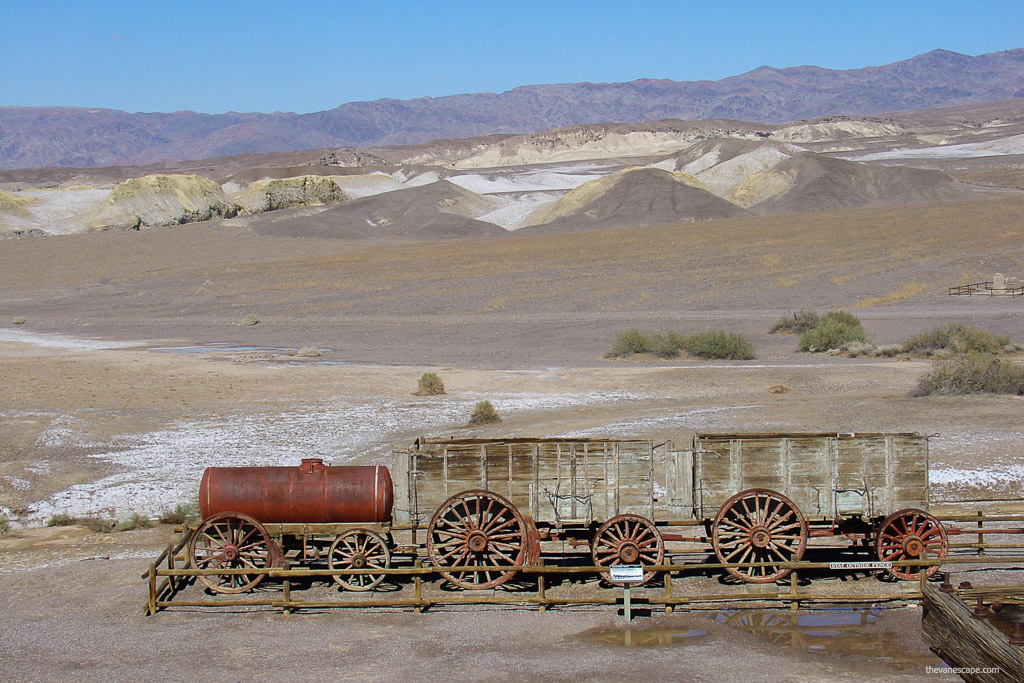
Visit Racetrack Playa
Racetrack Playa is a dry salt lake famous for its “walking stones.” It took many years for geologists to explore its mystery. Death Valley is not only one of the driest places in the world.
In addition, is also one of the windiest. Narrow canyons can amplify the force of the wind, and vertical walls provide the effect of reflected wind. If the bottom of the lake is muddy at the time, the rocks should have no trouble moving.
In 2013, scientists could directly observe the “migration of stones” and determine under what conditions this phenomenon occurs. The experiment began in 2011 when the scientists equipped a dozen or so stones with precise GPS receivers and set up an automated weather station in the valley to record weather conditions.
After heavy rains, the valley floor must be covered with a layer of water several inches deep so that a floating layer of ice can form, but no higher so that the water does not entirely cover the stones. On a frosty night, a sufficiently thick layer of ice must form on the surface.
During the day, the sun must warm the ice to break and create large sheets floating on the water’s surface. Under these conditions, even a relatively weak wind is enough to set the ice sheets in motion, supporting the stones. The stones move relatively slowly, at a speed of several meters per minute.
TRIP TIP: To get to Racetrack Playa 4WD is a must. There is a long, rough, rocky off-road through a remote landscape. It’s over 27 miles of unpaved road with sharp rocks. Visiting Racetrack Playa is one of the most extraordinary things in Death Valley National Park.
Admire Death Valley Dunes
Eureka Dunes, Ibex Dunes, and Mesquite Flat Sand Dunes are some of the most interesting you can explore in the park. However, remember that the sand is scorching in the summer months, so you can burn your feet. Photographing dunes is one of the best things to do in Death Valley.

Go For a Hike
Hiking is one of the best things to do in Death Valley National Park if you prepare well for it. Park offers many exciting hiking trails of varying lengths and difficulties. However, we do not recommend hiking in the summer due to the high sunburn and heat stroke risk.
Therefore, consider hiking outside of the summer months. If you only have the summer months to visit the park, ensure you are well-prepared and aware of all the risks. The fall and winter months are perfect for hiking in the park.
If you plan to hike in the desert wilderness, you should also pack a good map and detailed guide. Most of the Death Valley National Park is pure wilderness, with no cell phone reception and no water. Above all, conditions are extreme. Check out our Day Hiking Packing List.
Before you hit the hiking trail, check current alerts on the NPS website.
The best hiking trails in Death Valley National Park are:
- Golden Canyon and Gower Gulch
- Darwin Falls
- Telescope Peak
- Mosaic Canyon
- Grotto Canyon
- Twenty Mule Team Canyon
Detailed hikes descriptions you can be read on the NPS website.
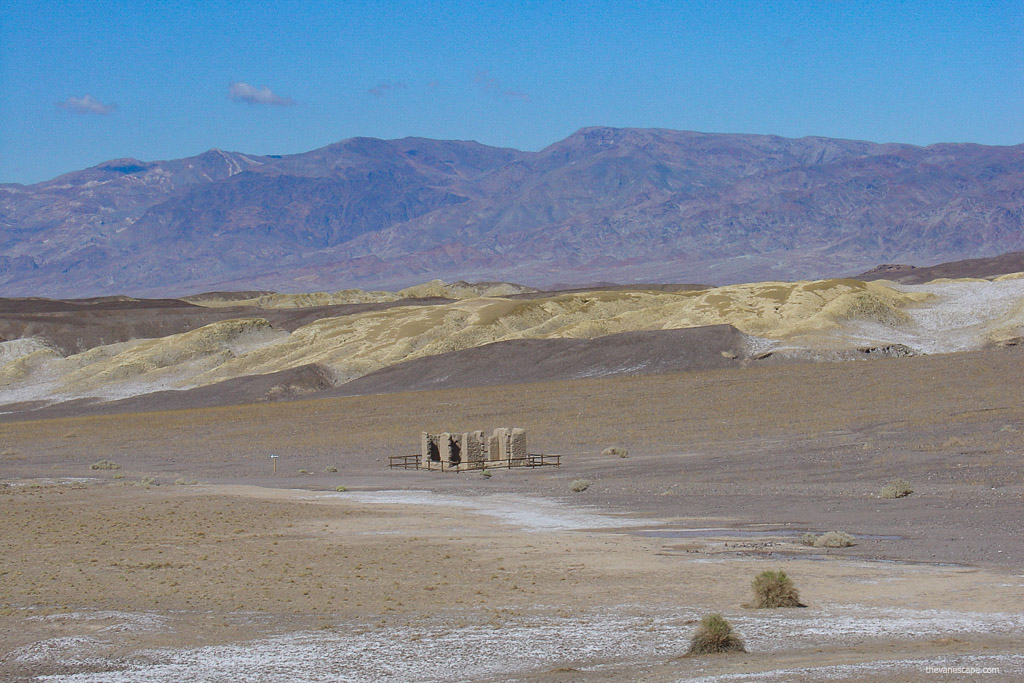
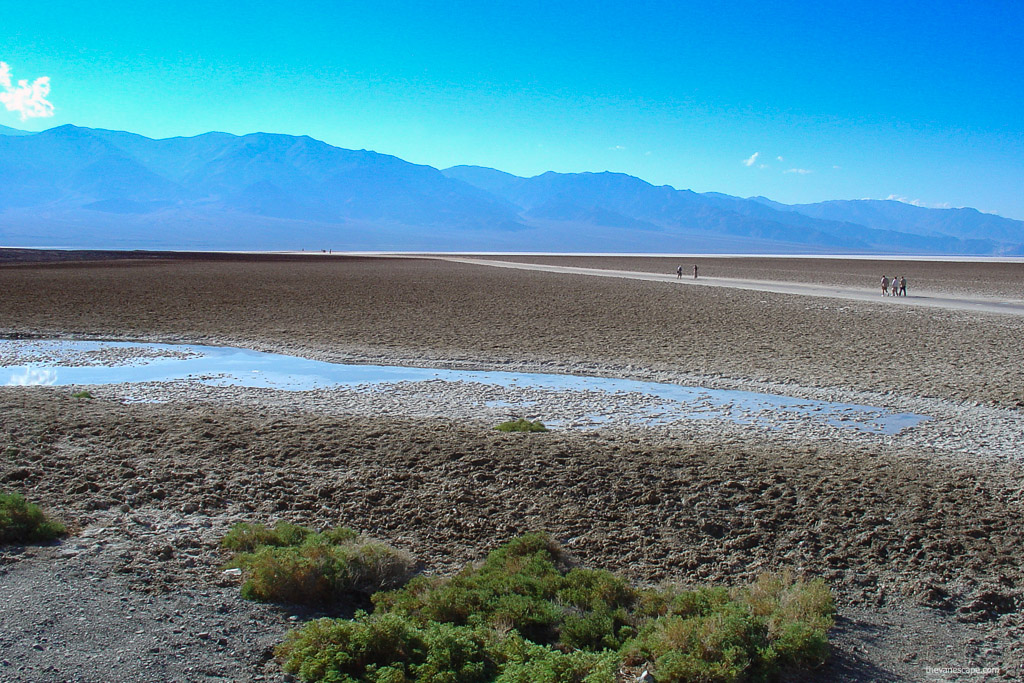
Explore the Backcountry of Death Valley
Exploring the backcountry of Death Valley is one of the most adventurous things in this park. Park is the largest US park (outside of Alaska). Moreover, most of the park area is wilderness. Moreover, there are more than 1,000 miles of roads, many of which are unpaved and rough to explore. If you plan backcountry experiences like Racetrack Playa or Eureka Sand Dunes, you must have 4WD.
Take a Trip to Death Valley from Las Vegas
You can also consider one day trip from Las Vegas. This is an excellent idea if you have limited time to explore. Thanks to the guided tours, you will see all the most important attractions of the Death Valley.
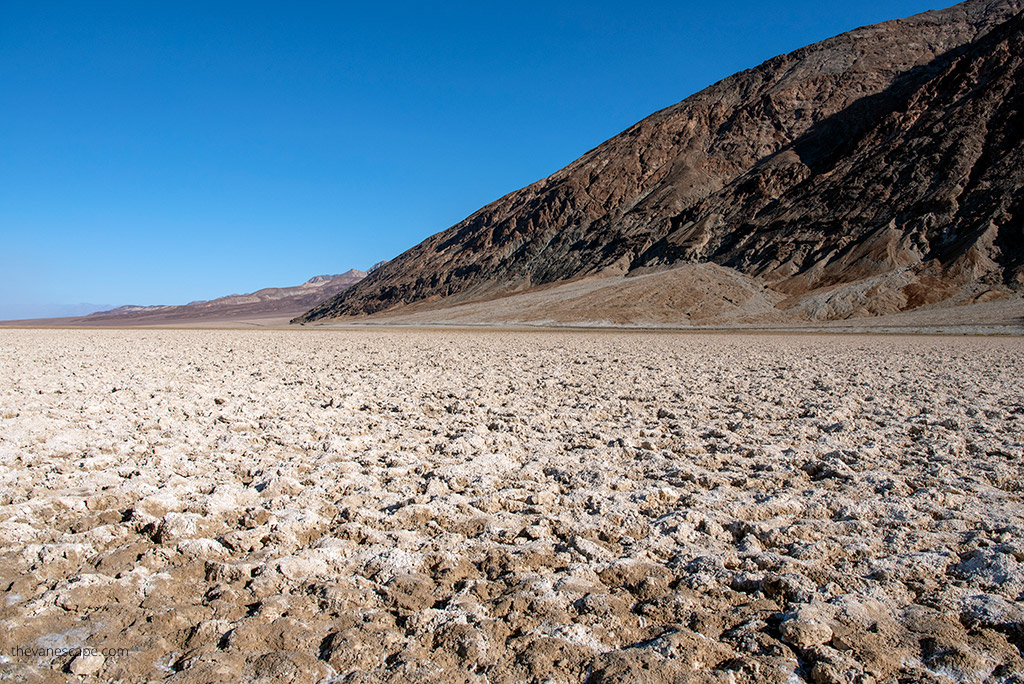
Things to Do in One Day in Death Valley National Park
If you only have a day, and visit the park on your own, we suggest focusing on Badwater Basin, Artist Palette Drive, Zabriskie Point, and Mesquite Dunes.
Things to Do in Two Days in Death Valley National Park
If you have two days for your visit: add Dante’s View, Rhyolite Ghost Town, and the Ubehebe Crater to your itinerary. It’s perfect for visiting Zabriskie Point for a sunrise or sunset. In addition, consider some easier hiking trails.
Things to Do in Tree Days in Death Valley National Park
If you have three days to visit Park, do some hikes like Golden Canyon/Gower Gulch, Sidewinder Canyon, and Desolation Canyon. Moreover, add the Harmony Borax Works to your itinerary, and if you have 4WD, visit Racetrack Playa.
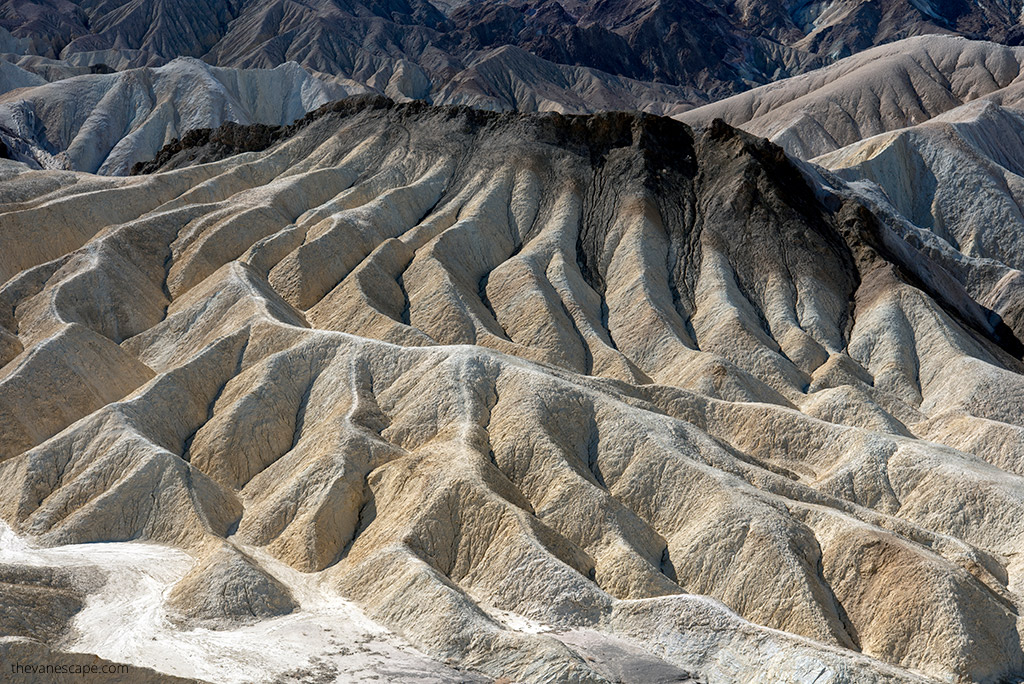
Where To Stay When Visiting Death Valley National Park?
There are several hotels and campgrounds around Death Valley where you can stay. However, it is worth booking in advance as their number is limited.
Death Valley Hotels
The Inn at Death Valley is one of the best but most expensive resorts. It’s beautiful, comfortable, and peaceful. It is an oasis in the desert. It is located near the park. All the rooms in the hotel are equipped with an apartment screen TV with cable channels. The rooms are equipped with a private bathroom with a shower. All rooms at The Inn are air-conditioned and include a desk. In addition, it offers a range of wellness facilities, including a sauna and a fitness center.
The Ranch At Death Valley is also a great choice. It provides accommodations with an outdoor swimming pool and a tennis court. What’s more, this property’s various facilities are a garden, a terrace, and a bar. In addition, the location is perfect for exploring Park.
Best Western Pahrump Oasis is our choice. The price is affordable, and the comfort is excellent. We loved our stay there. It’s about an hour’s drive to Death Valley National Park but was a reasonable distance to enjoy the sunrise and sunset. It also features 2 outdoor swimming pools, a hot tub, and a full-service business center.
Death Valley Campgrounds
Death Valley Inn & RV Park is a perfect choice if you travel by RV. Moreover, it also offers rooms, and the prices are affordable. In addition is located in Beatty, Nevada, only 8.1 miles from the entrance to National Park. This motel offers an outdoor pool, a hot tub, and a furnished terrace with BBQ facilities and shaded seating. Featuring modern furnishings, all of the nonsmoking guest rooms include free WiFi.
But if you are looking for cheaper camping, staying at one of the campgrounds in the parking area administered by the NPS is best. What’s more, you have several campgrounds to choose from. Furnace Creek Campground, Mesquite Spring, Thorndike Campground, and Wildrose Campground are the most popular.
Check on the official website details, prices, and which campground requires a reservation. In addition, prepare yourself for extreme weather conditions.
Finally, check our Road Trip Packing List Essentials and Car Camping Checklist if you plan a road trip and camping in the park. They can help prepare for your adventure.
